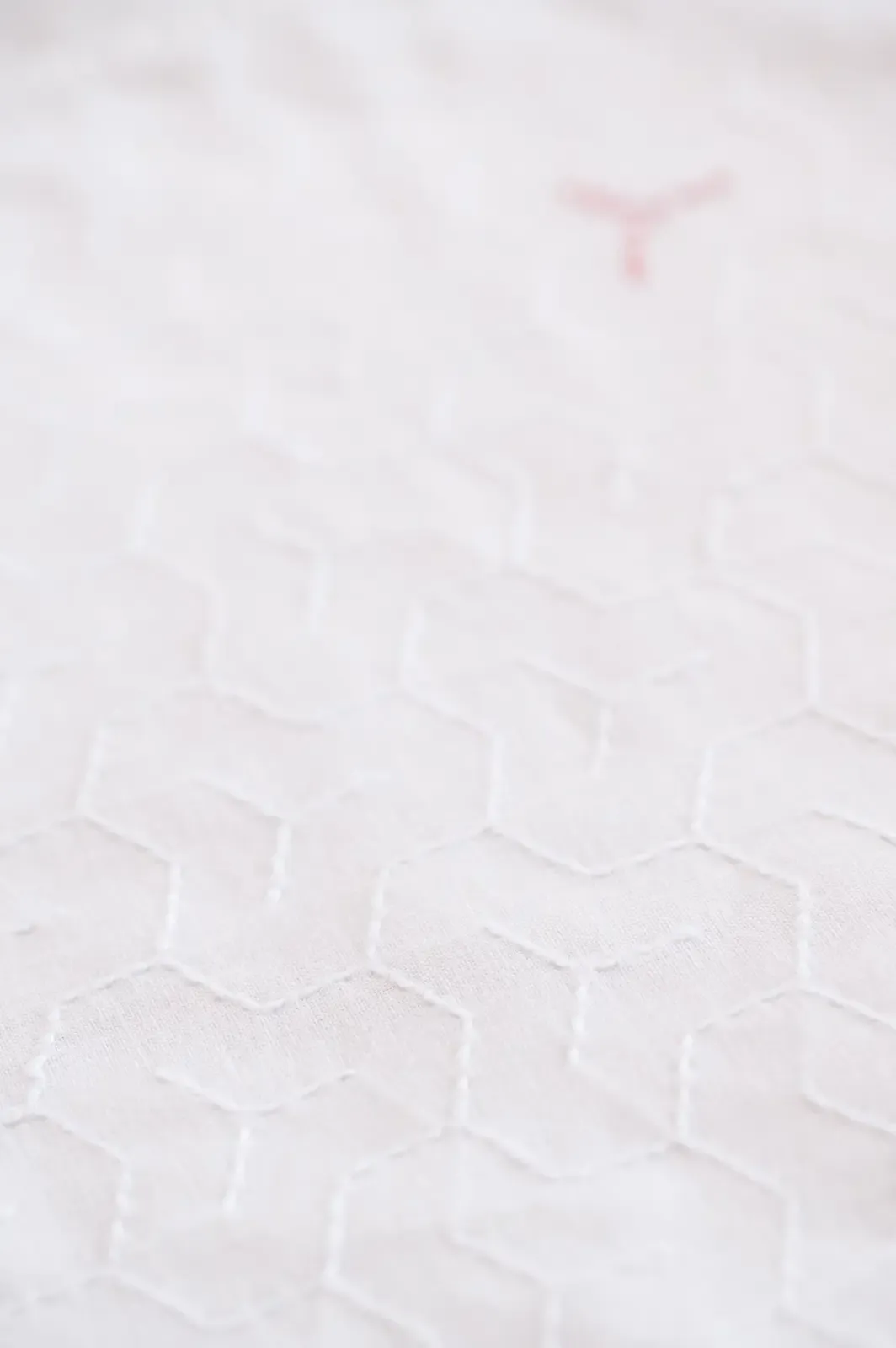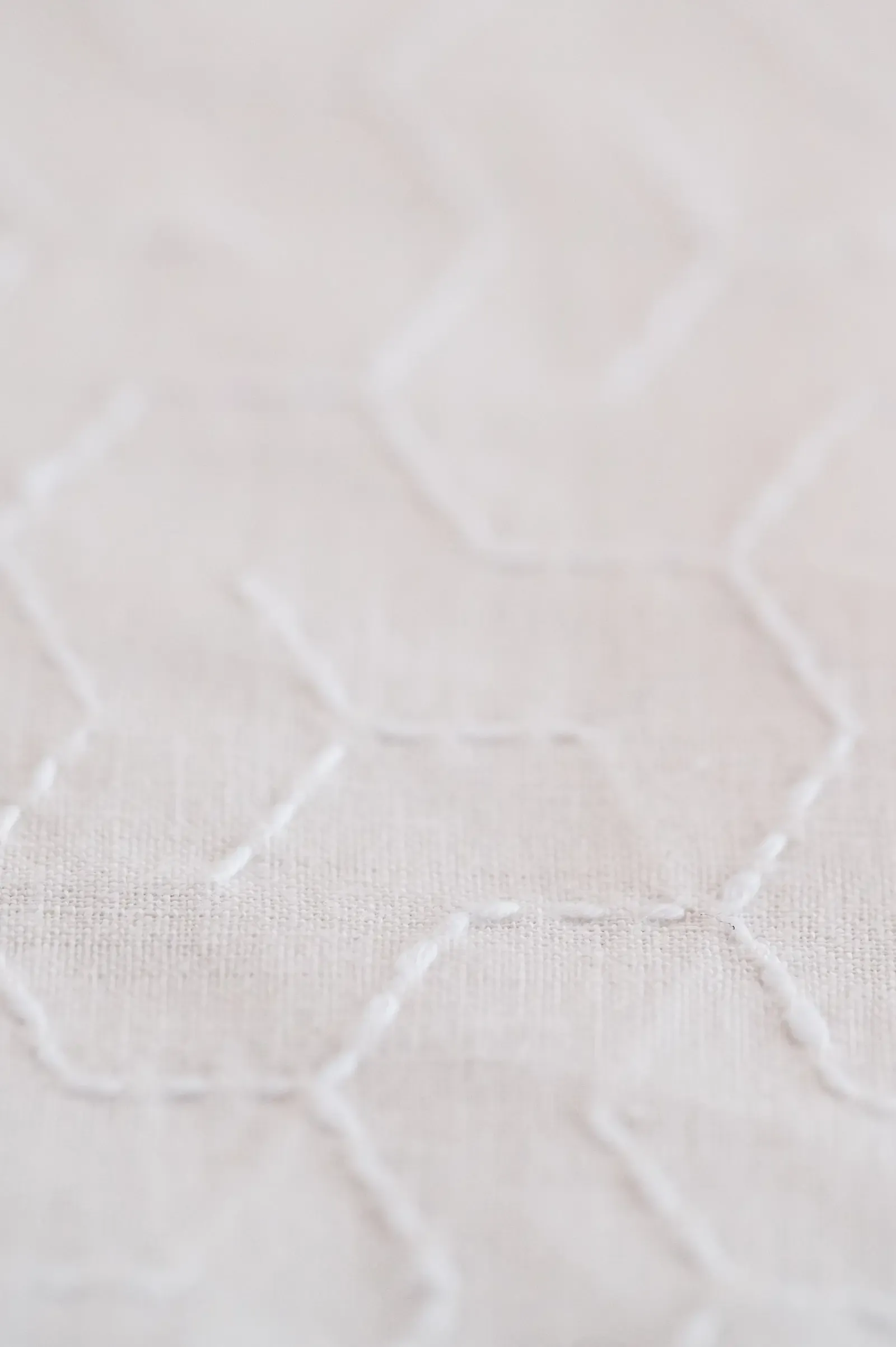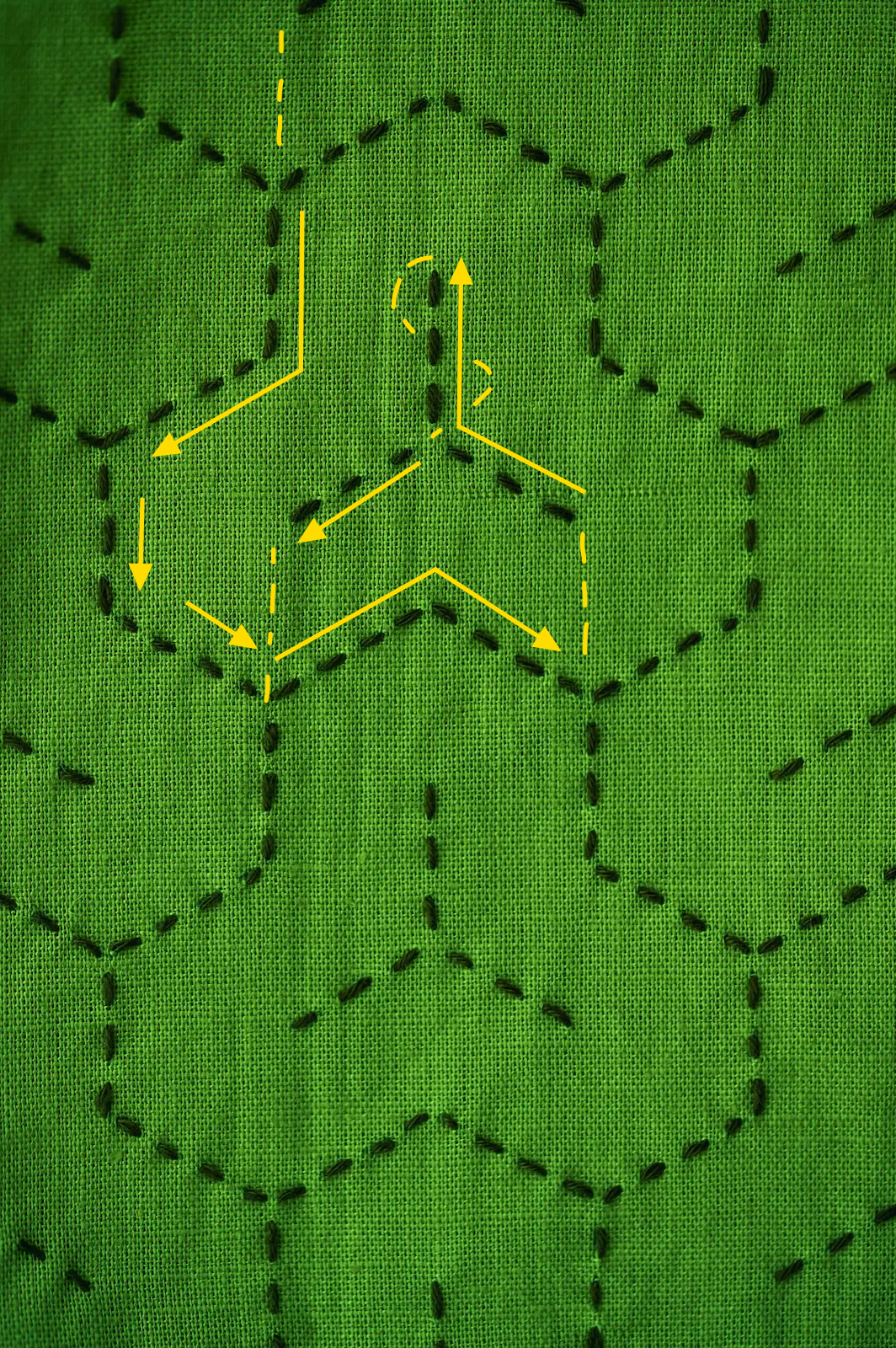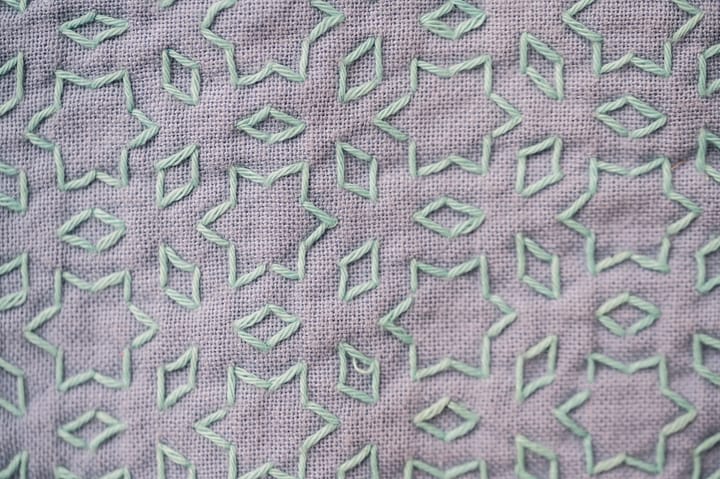The sashiko pattern bishamonkikkō 毘沙門亀甲 means “Bishamonten tortoiseshell.” | Sashiko Pattern
The sashiko pattern bishamonkikkō 毘沙門亀甲 means “Bishamonten tortoiseshell.”
毘沙門 bishamon refers to the buddhist god of war, Bishamonten. He looks pretty scary, but is one of the seven gods of fortune and represents dignity.
亀甲 kikkō means “tortoiseshell.” Tortoiseshells are represented by hexagons in Japanese patterns. This moyōzashi pattern is based on triple-layered hexagons.

Just like a tortoiseshell protects a tortoise, armor protects a warrior. Thus, the tortoiseshell represents Bishamonten's kacchū 甲冑 “armor.”
kikkō 亀甲 → kacchū 甲冑
See how the kanji for carapace 甲 appears in both words?

Bishamonkikkō derives its name from the chainmail armor of Tobatsu Bishamonten, enshrined at 教王護国寺 Kyōōgokokuji (commonly known as Tōji, a Unesco World Heritage site).
Tobatsu Bishamonten safeguarded the Heian capital. His armor is adorned with the bishamonkikkō pattern, which is named after this first place of appearance.

Meaning of the sashiko pattern bishamonkikkō
The bishamonkikkō pattern represents protection, strength, and auspiciousness. Its hexagonal design symbolizes longevity and resilience in Japanese culture, as turtles are considered enduring and protective creatures.
The connection to Bishamonten further enhances its meaning as a protective and sacred motif.
This pattern is often associated with spiritual safeguarding and good fortune, making it a popular design in traditional arts and crafts.
It also exists as a 家紋 kamon family crest:






Stitching advice for the sashiko pattern bishamonkikkō
The stitching order is hard to explain in words. I hope the photo below helps.
For the moyōzashi version of the pattern, the typical progression of stitches is the order below. Feel free to stitch in another order, but I must admit my first go ended up being a little bit of a mess.
You can't see it on the right side (the side shown in the photos here), but the ura 裏 left side doesn't look quite as nice. If you want an orderly left side, the path below is great!
When you retrace your stitches in the middle of the three carapaces, it's best to lead the thread through one or two stitches. Otherwise, something may get caught in a thread on the left side.
If you have two layers, let the thread for the dotted lines vanish in between the layers.

It's not a difficult pattern and it's pretty fast. If you are a beginner, you may have an easier time practicing unshin 運針, the typical way of doing sashiko, with a pattern that has longer straight lines, like the kagome pattern.






Comments ()